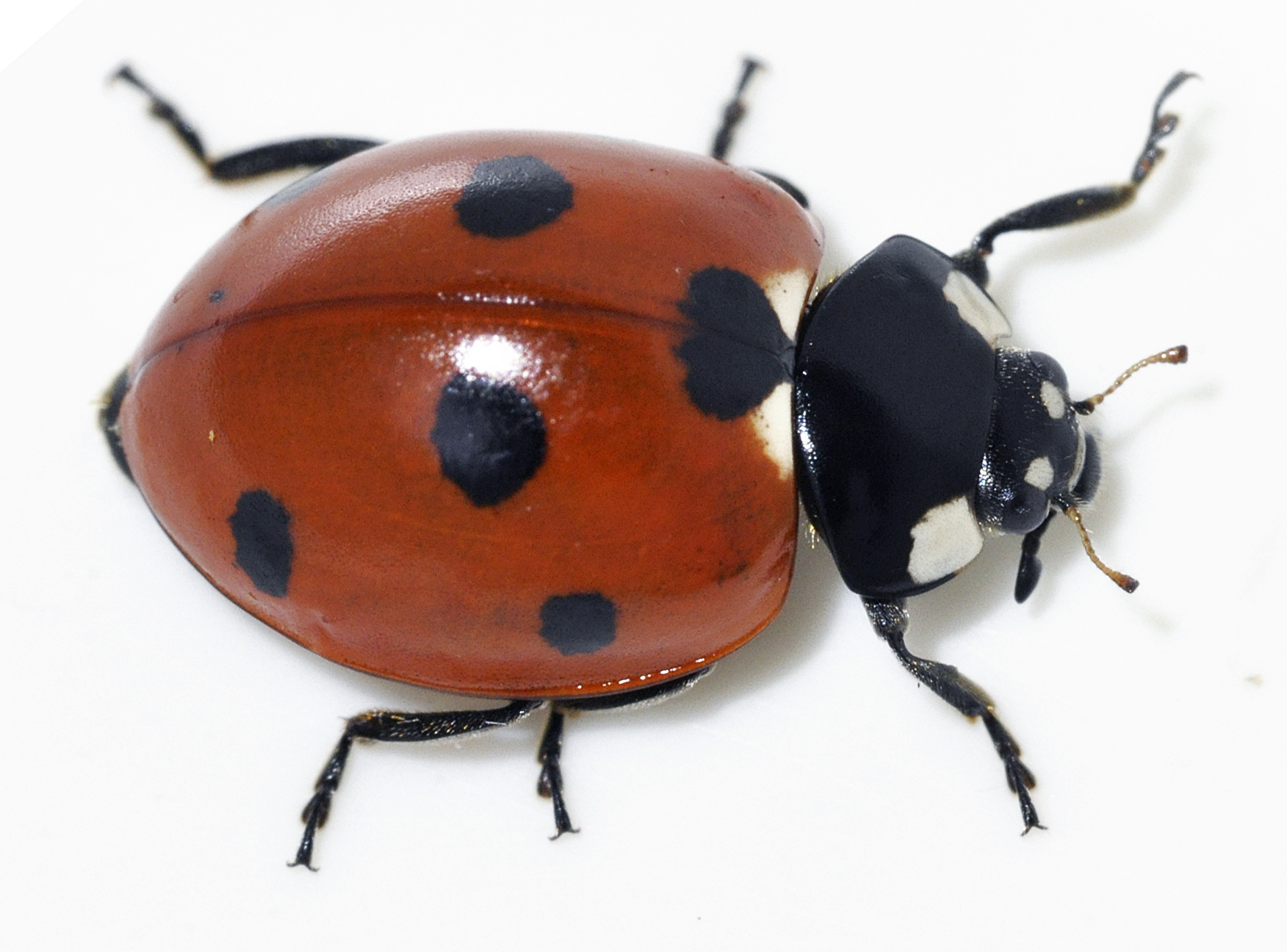Ladybugs, also known as ladybirds or lady beetles, are fascinating creatures. With their distinctive red or orange bodies covered in small black spots, ladybugs are some of the most recognizable insects in the Animal Kingdom. These tiny insects have a long history, interesting facts, and a surprising variety of species. In this blog post, we will explore the history, facts, size, habitat, and classification of these amazing animals.
Ladybugs have been around for a very long time, with fossils dating back to over 200 million years ago. In many cultures, they are considered a symbol of good luck and are even thought to bring good fortune. Ladybugs are small insects, typically measuring between 1 and 10 millimeters in length. They can be found in various habitats, including gardens, fields, forests, and even on mountaintops.
One fascinating fact about ladybugs is that they come in a wide range of colors and patterns, not just the classic red with black spots. Some species are yellow, orange, brown, or even black, and their spots can be circular, square, or absent altogether. Ladybugs are often classified into different families and genera, with thousands of species discovered so far. These diverse insects play an essential role in our ecosystems, as they feed on harmful pests like aphids, helping to keep plant populations in balance.
Ladybugs are truly extraordinary animals that captivate our interest with their vibrant colors, intricate patterns, and beneficial role in nature. By learning more about their fascinating history, facts, size, habitat, and classification, we can deepen our understanding and appreciation for these wonderful creatures. So, let’s embark on this exciting journey to unveil the world of ladybugs and explore the many wonders they hold.
History of Ladybug

The ladybug, also known as the ladybird or lady beetle, is a small insect that has a fascinating history. These tiny creatures belong to the family Coccinellidae, and there are over 5,000 different species of ladybugs found around the world. Ladybugs are loved by people because they have bright colors and spots on their elytra, which are the hard, protective outer wings. This makes them very easy to recognize and helps in distinguishing the various species.
Ladybugs have been admired and respected throughout history. In many cultures, they are considered symbols of good luck and prosperity. The name “ladybird” originated in Europe during the Middle Ages, when farmers prayed to the Virgin Mary for help in protecting their crops from pests. Soon, ladybugs appeared in large numbers and started to eat the harmful insects that were destroying the crops. This led people to believe that the ladybugs were a gift from the Virgin Mary herself, so they called them “Our Lady’s birds,” which later became “ladybirds” or “ladybugs.”
Ladybugs are not only pretty to look at but also serve a very important ecological role. They are voracious predators and feed on various pests, such as aphids, mites, and other insects that damage plants. This makes ladybugs extremely beneficial to farmers and gardeners as they help in natural pest control. Many farmers even release ladybugs into their crops to control pest populations instead of using chemical pesticides. Ladybugs also play a crucial role in the balance of ecosystems by helping to maintain the population of other insects.
Ladybugs have a rich history and are cherished by people all over the world. Their reputation as symbols of good luck and their ability to control pests make them highly valued. These tiny creatures are not only beautiful but also essential for maintaining the health of our gardens and ecosystems. Ladybugs truly deserve our admiration and protection.
Importance of Ladybug
Ladybugs are small insects that are widely recognized by their bright red or orange color with black spots. They are not just cute little creatures, but they also play a significant role in our environment. Ladybugs are beneficial insects, and they are considered nature’s natural pest control.
One of the main reasons why ladybugs are important is because they eat harmful pests that damage plants. Aphids, for example, are a type of tiny insects that can destroy crops and flowers. Ladybugs are known to have a healthy appetite for aphids and other plant-damaging pests. By eating these pests, ladybugs help prevent the destruction of plants and ensure healthy growth for our flowers, fruits, and vegetables.
In addition to their pest control abilities, ladybugs also help with pollination. Pollination is the process where plants reproduce by transferring pollen from the male part of a flower to the female part. Ladybugs transfer pollen as they crawl from one flower to another in search of prey or mates. This helps in fertilization, allowing plants to produce seeds and continue their growth cycle.
In conclusion, ladybugs are important insects that contribute to the well-being of our ecosystem. They act as natural pest controllers, eating harmful insects that destroy plants, and also assisting in the pollination process. Appreciating the role of ladybugs helps us understand the importance of all creatures, big and small, in maintaining the balance of nature.
Amazing Facts About Ladybug
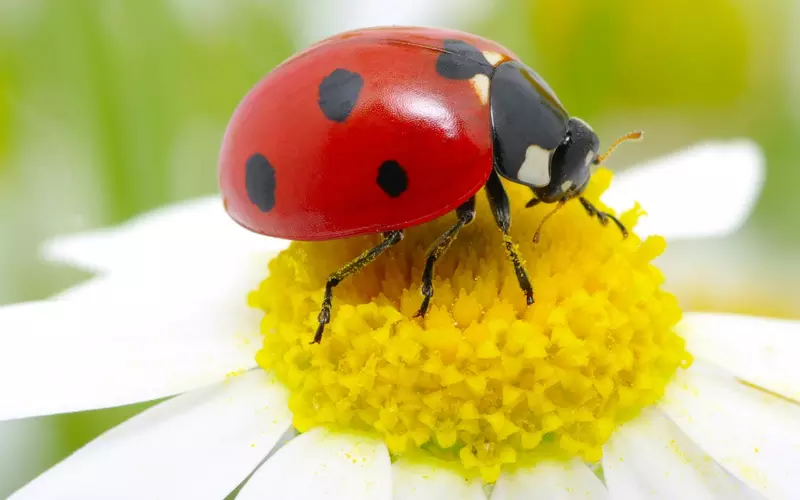
1. Ladybugs are small insects that belong to the beetle family.
2. They are also known as ladybirds or lady beetles.
3. Ladybugs are widely recognized for their distinctive red or orange bodies with black spots.
4. However, not all ladybugs have the typical red and black colors; some can be yellow, orange, or even black with red spots.
5. Ladybugs have a round shape, and their size usually ranges from 1 to 10 millimeters.
6. These insects have six legs and two antennae on their head.
7. Ladybugs are beneficial to humans and gardens as they eat harmful pests like aphids, mites, and scale insects.
8. During their lifecycle, ladybugs go through a complete metamorphosis, which includes the stages of egg, larva, pupa, and adult.
9. Female ladybugs can lay hundreds of tiny, yellowish eggs on the underside of leaves.
10. Ladybug larvae look different from adults; they have long bodies with black and orange or yellow markings.
11. Ladybug larvae are voracious eaters and consume a large number of aphids and other soft-bodied insects during this stage.
12. After the larval stage, ladybugs enter the pupa stage, where they undergo significant changes inside their cocoon.
13. Once they have completed their transformation, adult ladybugs emerge with their vibrant colors and spots.
14. Ladybugs are known to hibernate in large numbers during the winter months, often gathering in groups in protected areas like tree bark or caves.
15. Some species of ladybugs release a pungent yellow liquid when threatened, which can act as a defense mechanism against predators.
Can we keep Ladybug as our Pet?
Keeping a ladybug as a pet may not be the best idea. While these tiny insects are fascinating and beautiful creatures, they are not really suitable to be kept as pets. Ladybugs are wild animals that belong in nature, not inside our homes. They have specific habitats where they can find food and shelter, and it is important to let them live freely in these natural environments.
Ladybugs mainly eat aphids, which are small bugs that harm plants. By allowing ladybugs to roam freely in gardens and fields, they play an important role in controlling these pests and helping plants stay healthy. If we keep ladybugs as pets, we are taking them away from their natural habitats and disrupting the balance of nature. It would be like taking away a doctor from a hospital, leaving patients without care.
Instead of keeping ladybugs as pets, we can appreciate them from a distance. We can observe their vibrant colors and unique spots in our gardens or in parks. We can also make sure that our gardens have plants that attract ladybugs, providing them with food and a place to live. This way, we can help create a safe environment for ladybugs to thrive and play their vital role in our ecosystems. Let’s just enjoy their presence and let them live freely in their natural homes.
Size of Ladybug
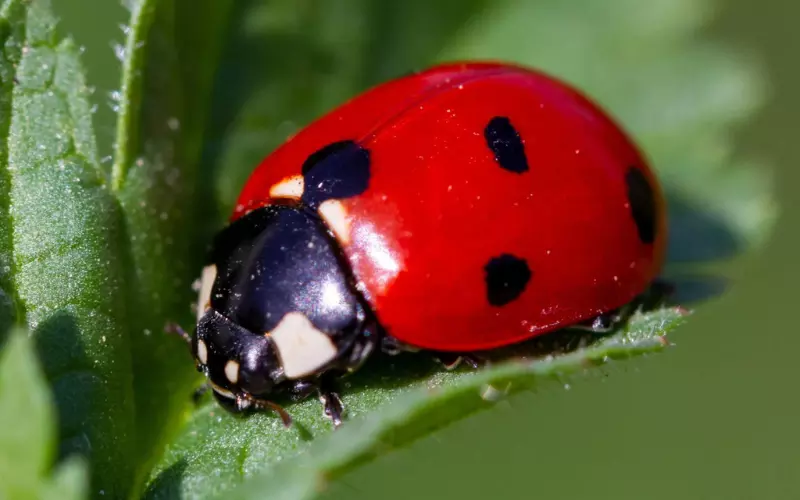
Ladybugs are tiny creatures that belong to the beetle family. They are very small in size, measuring only about 0.25 to 0.75 centimeters long. That’s even smaller than a fingernail! These little insects can easily fit on the tip of your finger. Ladybugs have a round, dome-shaped body with short legs, making them look even smaller.
Despite their small size, ladybugs come in a variety of colors. The most common ladybug species have a red or orange body with black spots, but there are also yellow, black, and white varieties. Their colors help to protect them from predators, as they can blend in with their surroundings.
Although ladybugs may seem fragile because of their size, they are actually quite strong for their small bodies. They have a hard shell called an exoskeleton that protects their delicate wings, organs, and body. The exoskeleton is made of a material called chitin, which is tough and flexible.
Ladybugs are tiny insects that measure only about 0.25 to 0.75 centimeters long. They have small bodies, short legs, and a round shape. Despite their size, they come in different colors and have a hard exoskeleton to protect themselves.
Habitat of Ladybug
Ladybugs, also known as ladybirds, are tiny insects that can be found in various habitats around the world. These creatures live in many places, including gardens, parks, forests, meadows, and even in some urban environments. Ladybugs are adaptable insects and can survive in both warm and cold climates.
One common place to find ladybugs is in gardens. These colorful insects are often seen crawling on plants, where they can find plenty of food. Ladybugs feed on tiny insects called aphids, which are known to harm plants. By eating aphids, ladybugs help keep the garden healthy and free from pests. Ladybugs are attracted to flowers, especially ones that produce pollen and nectar, as they provide a good source of food.
Another habitat for ladybugs is forests. They can be found on tree trunks, leaves, and even on the forest floor. In the forest, ladybugs can find various types of insects to feed on, such as scale insects and mites. Ladybugs also like to hide in the cracks of tree barks or among fallen leaves during the colder months, ensuring their survival during winter.
Ladybugs can also live in meadows and fields, where they can find a diverse range of plants and insects. They are often seen on grasses, wildflowers, and other vegetation. Ladybugs are helpful creatures because they eat harmful pests that damage crops. Farmers and gardeners often welcome ladybugs into their fields to help control pests naturally, reducing the need for pesticides.
Ladybugs can be found in gardens, forests, meadows, and various other habitats. These insects play an important role in controlling harmful pests and keeping the environment balanced. Next time you see a ladybug, remember that it is not just a pretty insect but also a helpful friend to have around.
Classification of Ladybug
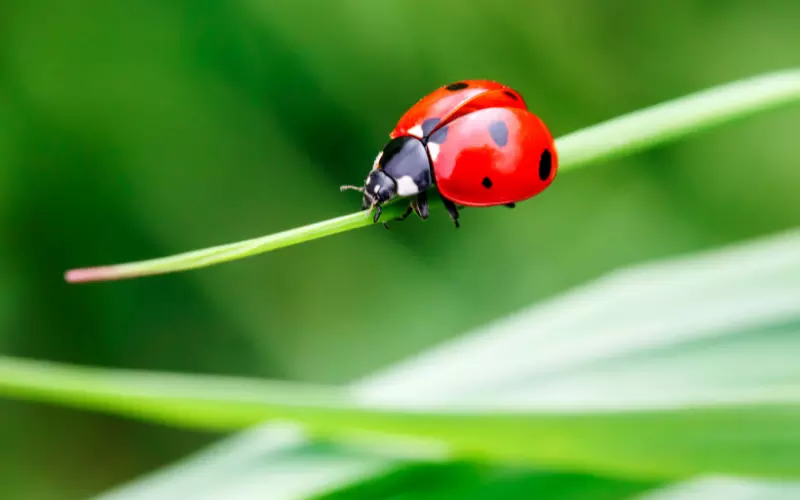
The ladybug is a small but fascinating insect that belongs to the animal kingdom. It falls into the classification of insects and is specifically categorized under the order Coleoptera, which includes beetles. Ladybugs are a type of beetle, but they have unique characteristics that set them apart from their counterparts.
Within the order Coleoptera, ladybugs belong to the family Coccinellidae. This family is further divided into many different species of ladybugs, with over 5000 known species worldwide. Each species of ladybug has its own distinguishing features, such as variations in color, pattern, and number of spots. Ladybugs are small insects, usually measuring around 1 to 10 millimeters in size.
Ladybugs have a special reputation for being beneficial insects. They are considered helpful to gardeners and farmers because they feed on pests that can harm crops, such as aphids. Ladybugs have brightly colored bodies that serve as a warning to potential predators. Their unique coloration, which is often red with black spots, acts as a defense mechanism to deter predators from attacking them.
Ladybugs are fascinating insects that fall under the order Coleoptera and the family Coccinellidae. With their vibrant colors and distinctive markings, ladybugs play a crucial role in controlling pests and protecting plants. Their small size and unique characteristics make them a beloved and appreciated part of the insect world.
Different Types of Ladybug
1. Ladybird Beetle: Also known as a ladybug, they are small insects with round bodies and bright colors. They have black spots on their red or orange wings, which serve as a warning to predators that they taste bad. Ladybugs are beneficial to farmers as they eat aphids, which are harmful to plants.
2. Asian Lady Beetle: This ladybug species is native to Asia and was introduced to many parts of the world, including North America, to control aphid pests. They have a wide range of colors, from orange to yellow, and can have up to 19 black spots on their wings.
3. Seven-Spot Ladybird: This ladybug species is widespread and characterized by its red or orange body with seven distinct black spots. They are commonly found in gardens and fields, feeding on aphids. Seven-spot ladybirds can also emit a yellow liquid from their legs as a defense mechanism.
4. Two-Spot Ladybird: This ladybug species has a red or orange body with two black spots on its wings. They are found in various habitats, including gardens, meadows, and forests. Two-spot ladybirds play a vital role in controlling aphid populations, thus benefiting agriculture.
5. Fourteen-Spot Ladybird: As the name suggests, this ladybug species has a red or yellowish body with 14 black spots. They prefer open areas such as grasslands and woodlands. Fourteen-spot ladybirds eat plant-eating insects, including aphids and mites, making them valuable in natural pest control.
6. Eyed Ladybird: These ladybugs have a round body similar to others but are distinct with their black markings on their elytra, resembling eyes. They are usually red with black spots, and some variations can have a black body with red spots. Eyed ladybirds prey on aphids and are commonly found in gardens.
7. Pine Ladybird: This ladybug species is unique as they have a dark brown or black body with red or orange spots, instead of the typical red or orange body with black spots. They are primarily found in coniferous forests and feed on aphids that attack pine trees.
8. Cream-Spot Ladybird: Cream-spot ladybirds have a yellowish-orange body with black spots. They are commonly found in meadows, woodlands, and gardens. These ladybirds are beneficial to farmers as they consume aphids, scale insects, and other plant-feeding pests.
9. Kidney-Spot Ladybird: These ladybugs have a round body with a yellowish-orange color and two black kidney-shaped spots on their elytra. They can be found in gardens and grassy areas, where they feed on aphids, insect eggs, and small insects. Kidney-spot ladybirds are helpful in maintaining the balance of insect populations.
10. Striped Ladybird: Striped ladybirds have a red or orange body with black stripes on each wing. They can be seen in various habitats, including gardens and hedgerows. These ladybugs devour aphids, mealybugs, and other soft-bodied insects, contributing to natural pest control in plants.
Overall, ladybugs are not just cute insects with bright colors; they play a crucial role in maintaining the ecological balance by feeding on harmful insects and pests. Their presence in gardens and fields is beneficial to farmers and gardeners as they act as natural pest controllers.
Geographical Presence of Ladybug
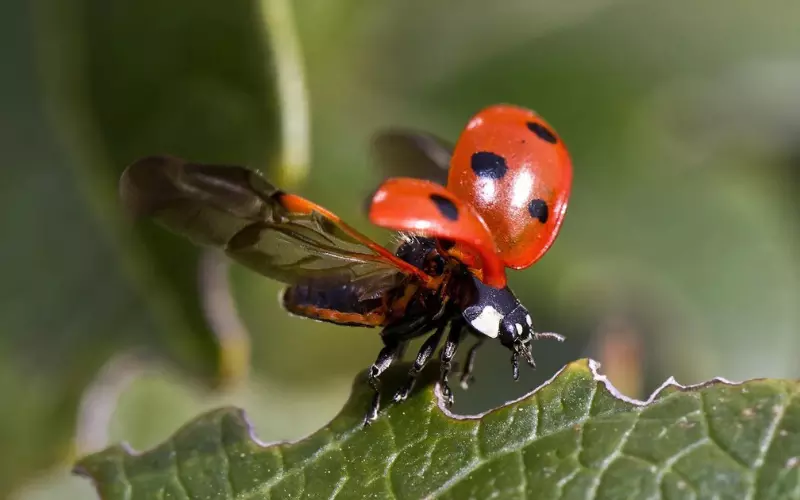
Ladybugs, also known as ladybirds, are small insects that are found in almost every region of the world, including North and South America, Europe, Asia, and Africa. These tiny creatures can be seen in gardens, parks, forests, and even in our own backyards. Ladybugs are loved by many people for their bright colors and cute appearance, but they are also beneficial insects as they feed on harmful pests like aphids, helping to keep plant populations in balance.
However, there are a few regions where ladybugs are not commonly found. In extremely cold areas, such as the Arctic and Antarctic regions, ladybugs are unable to survive due to the harsh weather conditions and lack of suitable habitats. Similarly, in very dry and desert-like regions, ladybugs may struggle to find enough food and water, making it difficult for them to thrive. Nonetheless, ladybugs have adapted to various climates and can be found in a wide range of environments.
It is important to mention that ladybugs are not exclusive to certain countries or continents. These delightful insects have managed to establish a presence in different regions worldwide, bringing joy to both children and adults alike. Their ability to adapt to diverse environments showcases their resilience and serves as a reminder of the beauty and diversity of the natural world.
Diet of Ladybug
The ladybug animal has a very interesting diet. It mainly eats small insects like aphids, which are tiny green bugs that harm plants. Ladybugs are really helpful in gardens because they eat these harmful insects, protecting plants from being damaged.
Ladybugs use their strong jaws to munch on aphids. In fact, an adult ladybug can eat up to 50 aphids in just one day! They simply grab the aphids with their mouth and chew them up. Ladybugs are able to eat so many aphids because they have a big appetite and they are quite good at finding them.
But aphids are not the only things ladybugs eat. They also enjoy snacking on other small insects like mites, scales, and even tiny caterpillars. Ladybugs are not at all picky eaters, and they will happily gobble up any small bugs that cross their path. It’s like a never-ending all-you-can-eat buffet for these little creatures!
Ladybugs have a very simple and satisfying diet. They mainly eat small insects like aphids, which harm plants. Ladybugs are like little superheroes for gardens as they protect plants by eating these harmful insects. They also snack on mites, scales, and tiny caterpillars. Ladybugs have a huge appetite and can eat up to 50 aphids in just one day. So, next time you see a ladybug, remember that it plays an important role in keeping our gardens healthy and beautiful.
Locomotion of Ladybug
Ladybugs are small insects that move around using a special type of locomotion. Their way of moving is called walking on six short legs. Each leg is attached to their body and allows them to move in different directions. This helps them to explore their surroundings and find food.
When ladybugs walk, they move their legs one by one. First, they lift a leg and move it forward, and then they do the same with the next leg. This movement is repeated until all their legs have moved. Ladybugs can also walk backward by using the same leg movement but in the opposite direction. This way of locomotion helps ladybugs to navigate through leaves, branches, and other obstacles in their environment.
Ladybugs move by walking on six legs. They lift and move their legs forward or backward to explore and find food. Their leg movement helps them to overcome obstacles and navigate their surroundings efficiently.
Social and Sexual Behaviour of Ladybug
Ladybugs are small insects that can be found in many areas around the world. They have interesting social and sexual behaviors that help them survive and reproduce. These behaviors are important for their survival as a species.
In terms of social behavior, ladybugs often gather in groups during the winter season to hibernate together. This group formation helps them stay warm and protect themselves from predators. Ladybugs also communicate with each other through the release of chemicals called pheromones. These help them attract mates or warn others of potential danger.
When it comes to sexual behavior, ladybugs have a unique way of finding a partner. The males release chemicals to attract females and then engage in a courtship ritual. During courtship, the male ladybug mounts the female on his back and they mate. After mating, the female ladybug lays her eggs on plants, which become their food source upon hatching.
Ladybugs exhibit interesting social and sexual behaviors. They form groups during hibernation, use pheromones to communicate, and engage in a courtship ritual to reproduce. These behaviors help ladybugs survive and ensure the continuation of their species.
Reproduction and Lifecycle of Ladybug
Ladybugs, also known as ladybirds, are fascinating insects that go through a remarkable life cycle. These colorful little creatures reproduce in a unique way, and their life cycle consists of three main stages: the egg, the larva, and the adult ladybug.
The first stage of the ladybug’s life cycle is the egg. Female ladybugs lay their eggs on the underside of leaves or stems of plants, often near colonies of aphids, which are the ladybug’s favorite food. A female ladybug can lay hundreds of tiny yellow or orange eggs at once. These eggs are usually shaped like a tiny oval, and they hatch within a few days.
Once the ladybug eggs hatch, the second stage of its life cycle begins – the larva stage. Ladybug larvae are small, spiky creatures with long bodies and legs. They may look a bit scary, but they are actually beneficial insects. During the larva stage, ladybugs grow rapidly by feeding on aphids and other small insects. This stage can last from a few weeks to several months.
Finally, the ladybug enters the adult stage. At this stage, ladybugs have fully developed wings and their characteristic bright colors and spots. They are now capable of reproducing. Adult ladybugs find each other through smell and are known to mate multiple times in a short period. After mating, the female lays her eggs, and the life cycle starts all over again.
Ladybugs go through a fascinating life cycle consisting of three stages: the egg, the larva, and the adult. From laying hundreds of tiny eggs to transforming into spiky larvae, and finally becoming colorful and spotted adults, these insects play an important role in controlling pests and helping plants thrive.
Threats to Ladybug
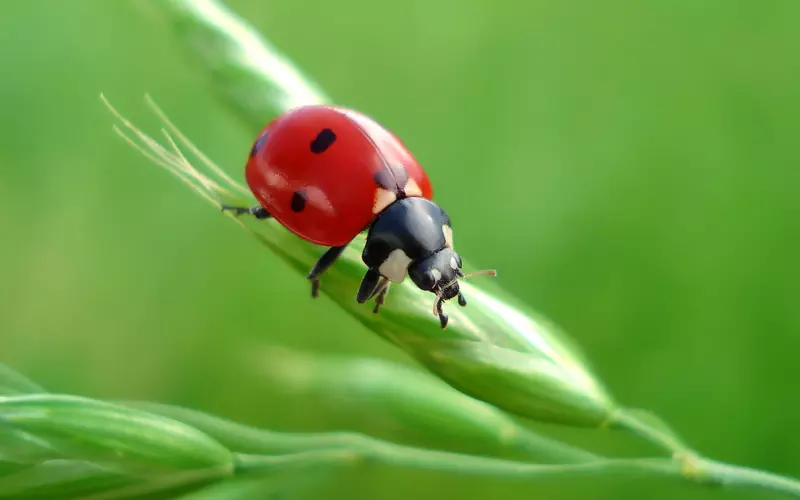
Ladybugs, also known as ladybirds or lady beetles, are small insects that are loved by many people around the world. These tiny creatures are not only colorful and cute, but they also play an important role in our environment. However, despite their popularity, ladybugs face several threats that put their survival at risk.
One of the main threats to ladybugs is the loss of their natural habitats. Human activities, such as deforestation and urbanization, destroy the plants and trees where ladybugs live and find their food. Without these natural habitats, ladybugs struggle to find suitable places to lay their eggs and feed on aphids, a type of plant-eating insect.
Pesticides pose another significant threat to ladybugs. These chemicals are commonly used to control pests in agricultural fields and gardens. Unfortunately, they not only kill harmful insects but also ladybugs and other beneficial insects. When ladybugs come into contact with pesticides, they can become sick or die. This is a major concern because ladybugs are natural predators of many pests, such as aphids, and help keep the ecosystem in balance.
Climate change is also impacting ladybugs. Rising temperatures and changing weather patterns affect the availability of food and disrupt the natural life cycles of ladybugs. Additionally, extreme weather events like droughts and floods can destroy ladybug populations and further reduce their numbers.
Ladybugs face threats such as habitat loss, pesticide use, and climate change. It is important for us to be aware of these challenges and take action to protect these fascinating insects. By preserving their natural habitats, reducing the use of harmful pesticides, and combating climate change, we can help ensure the survival of ladybugs and maintain a healthy ecosystem for all.
Conclusion
Overall, ladybugs are fascinating creatures that have a long history and are found all around the world. These small animals have unique characteristics and play an important role in the ecosystem.
Firstly, ladybugs have been around for a very long time. Fossils of ladybugs have been found that date back millions of years, showing that they have been a part of our planet for a very long time. These tiny insects come in a variety of colors and patterns, with the most common being red or orange with black spots.
Ladybugs are also helpful creatures. They are beneficial to farmers and gardeners because they eat other insects that can damage crops and plants. Ladybugs are known to feast on aphids, which are small pests that can harm the plants. This makes ladybugs valuable to have in gardens and fields as natural pest control.
Ladybugs are interesting animals that have a rich history and contribute to our environment in a positive way. Their small size and vibrant colors make them easy to spot, and their beneficial role in eating harmful insects helps to protect plants. Next time you see a ladybug, take a moment to appreciate these small but important animals and the important role they play in maintaining a healthy ecosystem.
Frequently Asked Questions about Ladybug (FAQ’s)
What is a ladybug?
A ladybug is a small, colorful beetle that is also known as a ladybird or lady beetle.
How many species of ladybugs are there?
There are over 5,000 species of ladybugs worldwide.
What do ladybugs eat?
Ladybugs mainly eat aphids, but they also consume other small insects like mites and whiteflies.
Where do ladybugs live?
Ladybugs can be found in a variety of habitats such as gardens, forests, meadows, and even in urban areas.
How long do ladybugs live?
Ladybugs typically live for about two to three years.
Why are ladybugs considered beneficial insects?
Ladybugs are considered beneficial because they feed on harmful pests that damage crops and plants.
How many spots do ladybugs have?
The number of spots on a ladybug’s back can vary, ranging from none to as many as 24 spots.
What colors can ladybugs be?
Ladybugs can come in various colors including red, orange, yellow, and even black.
Can ladybugs fly?
Yes, ladybugs have wings and are capable of flying.
Do ladybugs bite humans?
Ladybugs are generally harmless to humans and do not bite. However, they may give a slight pinch if they feel threatened.
Are ladybugs nocturnal?
Ladybugs are diurnal insects, meaning they are most active during the day.
How do ladybugs defend themselves?
Ladybugs have the ability to release a foul-smelling chemical when threatened, which deters predators.
Do ladybugs hibernate?
Yes, ladybugs hibernate during the winter months by gathering in large groups to stay warm.
Can ladybugs be kept as pets?
Yes, ladybugs can be kept as pets, but they require specific conditions and a proper diet to thrive in captivity.
Are ladybugs native to all parts of the world?
Ladybugs are found on every continent except Antarctica, making them nearly cosmopolitan in distribution.
How do ladybugs reproduce?
Ladybugs undergo a process called mating, where the male and female come together to fertilize eggs that the female lays.

Hi there! I’m Morgan Gutierrez, and I love animals! I work as a Seasonal Animal Care Specialist at Brookfield Zoo and also teach people about animals, which is super fun. I studied at Valparaiso University in Lockport, Illinois, where I learned even more about these amazing creatures.
I’m not just about taking care of animals; I write articles about them, too! I explore and share many interesting animal stories, from cute kittens to giant elephants.
In the past, I’ve worked with veterinarians, helped with research, and even been an Animal Ambassador, bringing animals closer to people. Animals are my passion, and I enjoy helping others learn about them. So, if you ever want to know about animals, feel free to ask. I’ll explain it in a way that’s easy to understand, just like talking to a friend!

